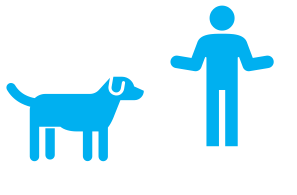2.2 Is AI smarter than humans?
Which of the following questions can a computer answer better?

2.2.1 Thinking, fast and slow
In Daniel Kahneman’s Thinking, fast and slow (Kahneman 2011) the Nobel prize winning psychologist and economist introduces two systems of thinking, one fast and one slow system he named system 1 and system 2. Through the interplay of the two systems, he explains human behavior and highlights flaws in human decision-making.
Characteristics of the two systems are shown below.

Characteristics of the two modes of thought
There are plenty of surprising social psychology experiments in his book, on page 166 the following question is posed:
A cab was involved in a hit-and-run accident at night. Two cab companies, the Green and the Blue, operate in the city. You are given the following data:
- 85% of the cabs in the city are Green and 15% are Blue.
- A witness identified the cab as Blue. The court tested the reliability of the witness under the circumstances that existed on the night of the accident and concluded that the witness correctly identified each one of the two colors 80% of the time and failed 20% of the time.What is the probability that the cab involved in the accident was Blue rather than Green? 6

Please cast your vote at https://pingo.coactum.de/157678 7 or access Pingo webpage scanning QR code below:

2.2.2 Predictions
In a meta study to compare human judgment to purely data-driven approach Grove (Grove et al. 2000) found that only in 6% humans were significantly better in predictions in the filed of psychology and medicine. In 136 studies ranging from IQ to diagnosis of heart diseases humans were in 46% significantly worse than purely data-driven approaches.

Characteristics of the two modes of thought
In “Machine, platform, crowd: Harnessing our digital future” McAfee and Brynjolfsson (McAfee and Brynjolfsson 2017) concluded therefore:
… the medical office of the future might employ an artificial intelligence, a person, and a dog. The AI’s job will be to diagnose the patient, the person’s job will be to understand and communicate the diagnosis, and to coach the patient through treatment, and the dog’s job will be to bite the person if the person tries to second-guess the artificial intelligence.

Medical office of the future
2.2.3 Decisions
How can ML support to find good decisions?
Two In 2006 the data analysis Avinash Kaushik coined the term “HiPPO” to summarize the dominant decision-making style at most companies. It stands for “highest-paid person’s opinion.
McAfee, Andrew; Brynjolfsson, Erik. Machine, Platform, Crowd: Harnessing Our Digital Future (p. 45). W. W. Norton & Company. Kindle Edition.

HiPPO decisions
ML can help to come to more fact based decisions but sometimes lack human ability to react to unforeseen events in an appropriate manner. Take for example Uber’s price surge as a reaction to increased demand during a terrorist attack.

Medical office of the future
ML did not react in a way which was in line with the moral value of the company, this is a valuable lesson that it makes sense to keep human in the loop for certain types of decisions.
Having said that, there are also very successful examples of an “automated economy”. For the numeric score of creditworthiness the FED even reported a reduced oppertunity for discrimination behavior.
 In 2012 Barack Obama worked with highly targeted campaigning with the help of ML they calculated for every voter in the US a three individual scores which they used to place they
In 2012 Barack Obama worked with highly targeted campaigning with the help of ML they calculated for every voter in the US a three individual scores which they used to place they
References
17*35=595↩︎
Knowledge neglect https://en.wikipedia.org/wiki/Knowledge_neglect↩︎
Die drei letzten Bundespräsidenten: Steinmeier, Gauck, Wulf↩︎
Pingo question: What is the probability that the cab involved in the accident was Blue rather than Green? https://pingo.coactum.de/questions↩︎